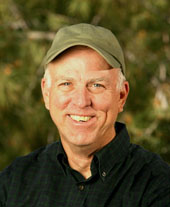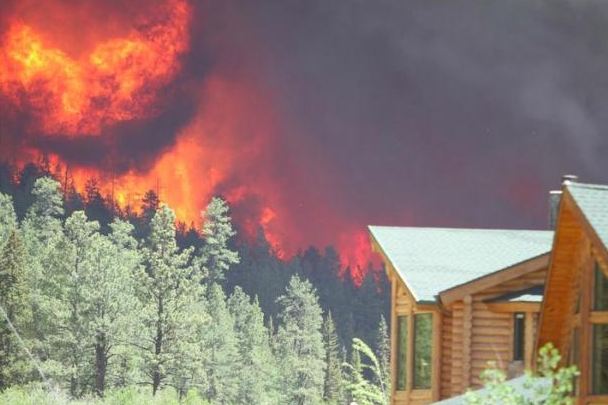
Stephen Pyne, prolific author about wildland fire world-wide, has released a book covering what he calls America’s fire revolution. Mr. Pyne had not written at length about fire management in the United States since 1980 when he published Fire in America: a Cultural History of Wildland and Rural Fire.
Released in October, 2015 Between Two Fires: a Fire History of Contemporary America, overlaps with the earlier one by a few decades and chronicles the evolution, or “revolution” as he calls it, over the last 60 or so years.
Much of Mr. Pyne’s knowledge of wildland fire came from spending 15 seasons on the ground with the North Rim Longshots in Grand Canyon National Park. He explains that since 1980 most of his work has involved fire on other continents (six of them as a matter of fact) and he felt that his “stockpiled capital of experience has leached away”. He began to re-immerse himself in the current realm of wildfire in America, leading to this new book.
Much of the information and the examples given in this new effort focus on the U.S. Forest Service. He said it is because “it reflects reality”.
In 1960 the USFS dominated the American fire scene, it continued to be a major player throughout the fire revolution, and it remains the only institution whose actions routinely affect all the rest.
Mr. Pyne writes about a number of notable fires that over the last 60 years had major impacts on management, policy, and the public’s perception of wildfire. One of the more recent blazes was the 2011 Wallow Fire that started in eastern Arizona and spread into New Mexico burning over half a million acres.

Mr. Pyne writes about the Wallow Fire:
With spots starting three or four miles away, there was little to contain it. Fuels, terrain, suppression, all had to wait for the winds to subside before they could steer the front’s trajectory, The flames burned with the singular direction of a loosed arrow.
Lynn Biddison, who we called a legend in wildland fire, died October 19 following a vehicle accident. Mr. Pyne devoted a page to him in the book. We appreciated one Biddison quote, on a subject we have written about many times:
Fact that never changes: The safest and least costly fires are the ones that receive strong initial attack and are suppressed while still small.
Reprinted here with the publisher’s permission is the complete passage about Mr. Biddison:
****
“…Consider the career of Lynn Biddison, who in 1960 accepted the fire control officer (FCO) position on the Cleveland National Forest. He already had 17 years of on-the-line firefighting experience and was a third-generation Forest Service fire officer. His grandfather had homesteaded near the Angeles National Forest and had became a forest guard at Bouquet Canyon, his father had worked up the ranks through the CCC fire program to become assistant FCO on the Angeles, and Lynn had begun work as a firefighter in 1943 at age 16.
Before he retired, Lynn Biddison had worked in nearly every position in the fire organization. In 1950 he was a crew foreman of the Chilao Hotshots in their second year, and he acceded to superintendent the next year. Then he supervised an inmate crew. He pioneered helijumping, the Southern California equivalent of smokejumping. Later, he was the Region 5 representative to the first national fire-behavior training course in Missoula in 1958. While on the Cleveland, he established the first standing forest-overhead teams, and he himself joined interregional teams. In 1968 he carried the California methods to the Southwest Region as regional fire director.
What he knew he learned early. His bosses were tough, direct, old-school bulls-of-the-woods and extraordinary teachers. “They were firm, they were fair, they knew what they wanted, and they knew their limitations. Their style was, ‘This is the way we’re going to do it, we will do it right, and do it now.’” You did your job. To illustrate, he recalls the 1952 Meadows fire on a Mt. San Gorgonio ridge at 10,000 feet amid Santa Ana winds. The district ranger pointed the fire out to them, and the Chilao Hotshots hiked in. They remained for 11 days. They had one blanket for every two crewmen, so they dug pits where they could light fires for cooking and sleeping. They had little food. Every few days a pack string would bring in water and rations.It was late October and “cold, cold, cold.” They stayed with the burn until it was dead out.
Thirteen years later Biddison returned to California as regional fire director. When mandatory retirement forced him out, he left with the exhortation to return to tried-and-true basics. That meant never having a fire, once contained, escape. It meant instilling a sense of urgency, critiquing actions on every fire regardless of size, and boring in and bearing down on standards, because high goals and hard work sparked pride. It meant “if the fire runs out, DO NOT GIVE UP—back up and start again.” Or simply, “FIGHT FIRE AGGRESSIVELY.”
In 1998 he distilled the lessons of his long career into one simple “fact that never changes: The safest and least costly fires are the ones that receive strong initial attack and are suppressed while still small.” ”
****
Between Two Fires, by Stephen J. Pyne, was published in October, 2015 by the University of Arizona Press.

100 pages into the book…
Great history on the organizations in a way only Pyne can tell it
Problem is …back to the SJ comments…
if you are too sensitive to Pyne’s style of writing…the choice is yours
More proof even from his viewpoint of a system in need of an overhaul
The quote comes from his thesis/first book.
correction: dissertation.
Initial attack worked really well on the Wallow, Rodeo, Okanogon, Carleton, Valley, Rim, Black Forest, Waldo, High Park, Rim, Cedar and Old fires … just to name a few of the largest fires of the last decade. Obviously you have to make an effort effort to catch the fire when it is small, but in most cases with fires that get up and move fast in the first burning period, initial attack is futile. Resources must be committed to structural protection and evacuation. Fire management policies that emphasized rapid initial attack as the only tool in the box is what got us in the current fuels situation throughout the west in the first place. I find it interesting that this publication continues to promote this failed policy. Fires that that fit the “Fact that never changes: The safest and least costly fires are the ones that receive strong initial attack and are suppressed while still small.” are fires that had low potential risk in the first place and in most cases should have been allowed to do some ecosystem management within appropriate geographic areas and environmental conditions. However, the window of opportunity to promote fire in the landscape whether through natural or prescribed ignitions shut down decades ago due to lack of political courage and the rapid growth of structures adjacent to our natural wildlands.
IA failed miserably on the Biscuit Fire.
As I remember it, Biscuit started off as 3 seperate fires in really tough and remote terrain? Refresh my memory about the IA.
I refer you to several papers on the fire that Chuck Mansfield wrote on the subject. If you cant find them in the public domain, Bill has my permission to give you my e mail address and I will get them to you.
There were 82 Smokejumpers available for dispatch the day the Biscuit Fire broke out. None were requested. Multiple loads could have been on the fire the first night. The Federal IA system is very broken.
Sort of hard to believe, Chris
Unless you can sort of prove that quote with reference
I knew the jokes of us engine slugs….
Did all those SJ’s write him off, too?
You would have to ask them, Leo.
The quote is in Pyne’s first book/dissertation, “Fire in America: A Cultural History of Wildland and Rural Fire”
I am sure of you e mail Professor Pyne he would be happy to provide a citation for the actual quote and probably the quote itself.
Mind you, he didn’t bother to back his assertion in his dissertation.
well, Chris is right, it is in his first book and he was obviously wrong if you know anything about the jumper program. I didn’t write him off, though. It wasn’t too popular back when wrote “Fire in America..” to point out some of the glaring failures of long standing Forest Service policy but he did and he has been proven right in that regard. I find he is insightful and brings a “outside the fence” perspective. But he was wrong about the jumpers.
Well, “Joe” after this thread started I decided to go back through the book. what I found was rather interesting. If you wish to continue this discussion, I have given Sheley permission to give youmy e mail address since you apparently
know who I am.
I wrote off Pyne 35 years ago when he said that Smokejumpers belonged in a museum next to the Cavalry.
Your loss, pal.